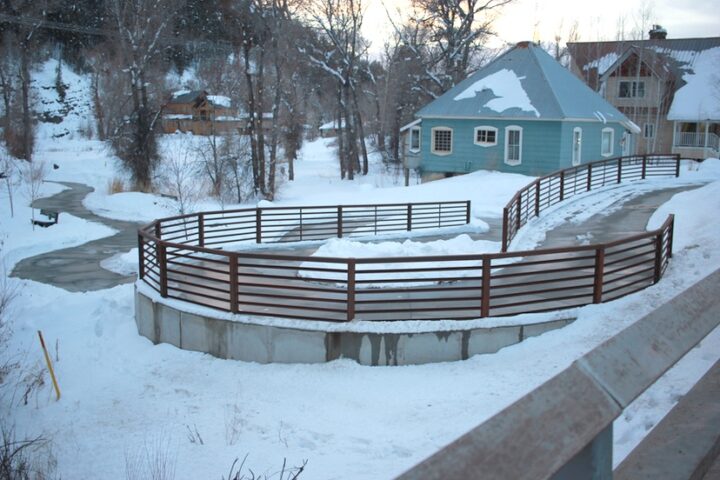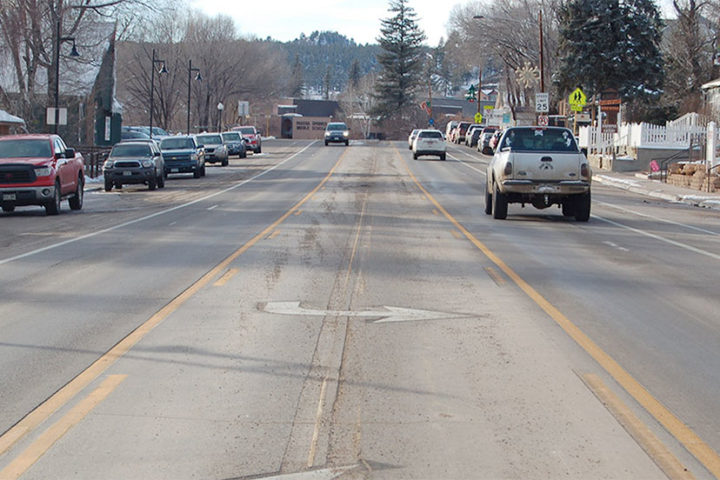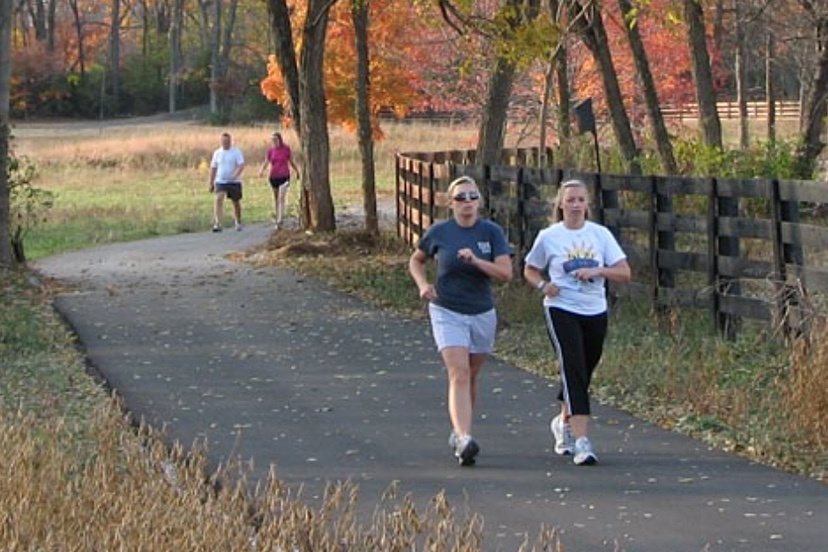PHOTO: A recreational trail, or maybe a ‘commuter trail’, somewhere else — not Pagosa Springs.
We concluded Part One by mentioning the January 9 comments by the Town’s new Project Manager, David Hilborn, where he assured the Town Council that the Archuleta Board of County Commissioners were “in full support” of a $10 million grant application to finally complete the ‘Town to Lakes Trail’ begun back in 2011.
Apparently, the project is now being referred to as the “Town to Lakes Commuter Trail”.
Perhaps the “full support” from the BOCC isn’t quite as “full” as the Town Council was led to believe last week?
Mr. Hilborn and the Town’s Community Development Director James Dickhoff explained one of the trickier parts of the long-delayed trail project: getting up a rocky hillside between Aspen Village and Harman Park.
When I discussed the project, the following day, with County Manager Derek Woodman and County Commission chair Ronnie Maez, the hillside was described as a “cliff”.
It’s not exactly a cliff. But it’s a pretty steep hillside. Here’s a photo, looking north.

Several plans have been commissioned by the Town, over the past decade, looking for a way to get over, or around, this hillside.
As I understand the situation, there are basically two options.
The Town can build a separate “trail”. Or the Town can build a street… and include a sidewalk beside the street.
The benefit of a trail is, it’s usually less expensive to build than a street.
The problem with a trail, when you are getting federal grants, is the requirement that the slope of the trail be suitable for wheelchair access. That means, in this situation, switchbacks, such as the switchbacks that were required for the First Street Trail, downtown.

The benefit of building a street, with a sidewalk… well, there are two benefits. One is additional vehicle access from Aspen Village to Harman Park without needing to use Highway 160. The second benefit is, the federal ADA Access requirement no longer applies. The sidewalk can simply follow the slope of the street, whatever slope that might be. No switchbacks necessary.
The problem with building a street with a sidewalk… well, there are three problems. One, it’s typically more expensive than a trail. And two, the street would seemingly have a very steep slope, making handicapped access challenging, going up or down the sidewalk.
And three, the street would run right through County property where a new Administration Building is being proposed.
At the Town Council meeting, Mr. Hilborn and Mr. Dickhoff presented the “street and sidewalk” as their preferred solution.
According to Mr. Woodman and Commissioner Maez, the County would fully support a pedestrian/bicycle trail through County property, but the County is currently opposed to a street running through County property.
This might be what Mr. Hilborn meant, when he said the County was “in full support… and they have had a couple of comments… with regards to the project, as well.”
But for whatever reason, he didn’t explain to the Council what he meant by “a couple of comments”.
In our quest to address ‘climate change’, and to promote healthy physical activity, America is slowly becoming ‘multi-modal’ — at least, in our collective imaginations — and the transportation grants offered to cities and towns by state and federal agencies typically embrace that vision of the future. Ideally, we will someday stop driving so many cars and trucks, and we’ll walk more and ride our bicycles.
Seven years ago, the Colorado Department of Transportation (CDOT) obtained a ‘multi-modal’ grant to redesign the vehicle lanes through downtown Pagosa Springs. Previously, the highway through town had consisted of two lanes of vehicle traffic in each direction. The new striping pattern created a center turning lane, and dedicated bike lanes on either side.

The new striping pattern aimed to slow vehicle speeds, and permit safer use of bicycles.
In our collective imaginations, the bike lanes along Highway 160 should have encouraged the expanded use of bicycles in Pagosa Springs, by local residents. I live downtown and I drive the downtown segment of Highway 160 on a daily basis… and almost all the bicycling I have seen downtown has looked, to me, like tourists on rental bikes. That is, recreational bicyclists.
Over the past seven years, I’ve also seen many bicycles riding up and down Put Hill — a much more dangerous stretch of highway where CDOT has never added bike lanes. The Town to Lakes Commuter Trail would theoretically accommodate these bicyclists, and make their lives safer. Theoretically. Assuming that they would choose — as the preferred route to their job — a long and winding trail instead of the more direct path provided by Highway 160.
The “Town to Lakes Trail” study performed by Greenways Team in 2011, was illustrated with numerous photographs of people walking and bicycling on similar trails in other communities. Were these people “commuting” to work? Or enjoying a recreational activity? That’s not clear from the study.
But it’s pretty clear from the presentation to the Town Council last week, that the ‘Town to Lakes Commuter Trail’ project will be sold to the grant-funding agencies partly as a way for people to get to work safely, without burning fossil fuels.
We shouldn’t fool ourselves. This project has never made a convincing case that a significant number of local residents will actually use a trial that goes uphill for two miles, as the preferred way to ‘commute to work’.
These types of trails, wherever they’ve been built in Colorado, are mainly for recreation.
In reality, many of the decisions made by our local governments seem to be based, not on ‘multi-modal’ needs, but rather on the desire to enhance recreation. Often, people locating permanently in Pagosa Springs are attracted by the numerous recreational opportunities here — in this ‘recreational wonderland’ — and that particular type of person is well represented on the Pagosa Springs Town Council, and among the Town staff.
So, it makes perfect sense that the Town would spend time and effort — over 12 years of time and effort, so far — on a recreational trail project, while doing relatively little to solve the most serious challenge to the community’s well-being: the lack of workforce housing.

